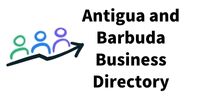Creating an effective floor plan is essential for showcasing a property’s layout and maximizing its appeal to potential buyers. However, raw floor plan images can often lack clarity and detail, which can detract from their effectiveness. Photo editing offers a powerful solution to enhance these representations, transforming basic floor plans into polished, professional visuals that convey a clear sense of space and functionality. By employing various editing techniques, you can improve the presentation of floor plans, ensuring they accurately reflect the property’s layout while remaining visually appealing. This guide will explore the methods and tools available for enhancing floor plans through photo editing.
Understanding the Importance of Clear Floor Plans
Clear and detailed floor plans are vital in real estate marketing, as they provide potential buyers with a comprehensive graphic design services of a property’s layout. A well-designed floor plan allows buyers to visualize how they would navigate and use the space, making it an important selling point. However, many floor plans may appear cluttered or lack essential details, leading to confusion. By utilizing photo editing, you can enhance the clarity and organization of floor plans, ensuring they effectively communicate the property’s advantages to prospective buyers.
Choosing the Right Photo Editing Software
The first step in enhancing floor plans through photo editing is selecting the right software. Programs like Adobe Photoshop, Illustrator, or specialized tools such as SketchUp and SmartDraw offer various mastering the art of color correction for visual excellence tailored to floor plan editing. Photoshop and Illustrator allow for detailed adjustments, while dedicated floor plan software provides tools specifically designed for layout creation and modification. Choosing the right software depends on your familiarity with the tools and the complexity of the edits you wish to make.
Enhancing Clarity and Detail
One of the primary goals of editing floor plans is to enhance clarity and detail. Begin by adjusting the brightness and contrast to ensure that lines and features are easily distinguishable. Increasing the botswana business directory can help define edges, making rooms and features more prominent. Additionally, consider using layers to add annotations, labels, or color coding to highlight specific areas, such as living spaces, kitchens, and bathrooms. These enhancements can make the floor plan more informative and easier for potential buyers to understand.
Incorporating Color and Textures
Using color and texture in your floor plans can significantly improve their visual appeal. Adding color to different rooms or sections can help differentiate spaces and make the layout more engaging. For example, using a light blue for bedrooms and a warm yellow for living areas can create a welcoming atmosphere. Textures can also be applied to give a sense of materiality to surfaces like floors and walls, enhancing the overall realism of the plan. However, it’s essential to ensure that colors remain harmonious and do not overwhelm the viewer.
Adding Furniture and Fixtures
To provide a more realistic representation of the spaces, consider adding furniture and fixtures to your floor plans. This technique helps potential buyers visualize how each area can be utilized, making the floor plan more relatable. You can either create simple representations of furniture or use 3D models, depending on your software and skills. Placing furniture in logical arrangements can also demonstrate the flow of the space, making it easier for buyers to imagine themselves living in the property.
Finalizing and Exporting the Floor Plan
Once you’ve made all necessary edits and enhancements, it’s crucial to finalize and export the floor plan correctly. Ensure that all elements are aligned and that the overall layout is balanced. Consider adding a title, legend, or scale to provide context for viewers. When exporting the final image, choose a high-resolution format suitable for both print and online use. This ensures that your floor plan maintains quality across various platforms, whether viewed on a website or printed for promotional materials.
